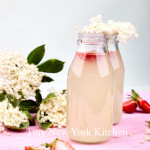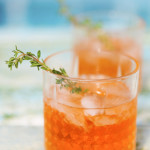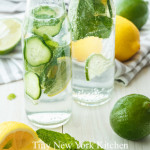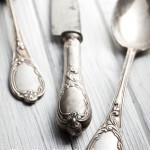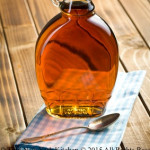For many years I have used my fancy dishes, even for my morning breakfast. Now that we have been at home more than ever, it seems especially important that this is the time to use them. Why save special plates for company or holidays? Pull out your grandmother/s china. Even if it’s for dinner with the kids on a Wednesday night or a midday snack. Beautiful things are made for using!
©Tiny New York Kitchen © 2020 All Rights Reserved
Kombucha is a tart, fizzy, fermented beverage made of sweetened tea and a specific culture known as a SCOBY (symbiotic culture of bacteria and yeast). It has been around for thousands of years. Kombucha’s probiotic content is what has everyone’s attention. The fermentation process also creates some vitamins, including vitamin C and certain B vitamins, and tea naturally contains antioxidants. However, there’s not hard scientific evidence to confirm the various health benefits that have been associated with probiotics. Not yet, at least. Enjoy Kombuchas as an alternative to sugary soft drinks, one with a possible probiotic, and nutrient boost. Too much Kombucha, however, could mean excess caffeine and sugar, not to mention that it’s a carbonated product and that could cause digestive issues when drinking high amounts. Most bottles contain two servings, so check the label and stick to 8 ounces or less at a time.
www.tinynewyorkkitchen.com
“Work With What You Got!”
©Tiny New York Kitchen © 2019 All Rights Reserved
Kombucha (also known as tea mushroom or Manchurian mushroom) is a fermented, slightly sparkling black or green tea beverage that is usually lightly flavored with fruit, ginger, or herbs. Kombucha is commonly intended as a functional beverage for health benefits (although there is no real scientific evidence to support health benefit claims). Kombucha is produced by fermenting tea using a symbiotic culture of bacteria and yeast. Many people, myself included, drink kombucha as a source of probiotics, which is the “good bacteria” that are beneficial for digestion. Pregnant women and children under age 4 should not drink kombucha.
“Work With What You Got!”
©Tiny New York Kitchen © 2018 All Rights Reserved
Ice Tea or Iced Tea? It depends on where you live. In the South, it’s called ice tea and everywhere else it’s called iced tea.
Iced tea did not take its current form until the popularity of black tea took off, thanks to the work of the Indian Tea Commission at the St. Louis World’s Fair in 1904. As the legend goes, Richard Blechynden, the head of the commission, watched the fairgoers pass by his elaborate teahouse as the sweltering temperatures made hot beverages unpalatable. Driven to increase the market for Indian black tea in the States, he hit upon the idea of not only serving it iced, but also perhaps more importantly, giving it away for free. His booth was soon the most popular at the fair as the patrons found his golden beverage to be the perfect refreshment.
Spurred on by his success in St. Louis, Blechynden toured the country, giving away more and more iced tea, quickly spreading its popularity nationwide. Brewing the perfect iced tea at home, complete with sweet and often fruity syrups, soon became the hallmark of a great hostess. Iced tea was mixed with all sorts of flavors in delicious punches; lemon, mint, strawberries, cherries, and oranges, whether fresh, preserved, or in syrup form or, for the more mature palette, brandy and bourbon to give it a little extra kick. And though few still have time for such an elaborate and time-consuming production (early recipes recommend beginning to brew tea at breakfast for service at dinner), iced tea remains an American favorite, available in bottles, cans, and even from a soda fountain.
To make iced tea use double the amount of tea or teabags that you would use for hot tea when you’re planning to chill the drink. And allow the tea to come to room temperature before you put it into the refrigerator. Fill an ice cube tray with tepid tea and freeze for ice that won’t dilute your drink. You could also float some minced mint or fruit in the cubes for a special treat.
“Work With What You Got!”
© Victoria Hart Glavin Tiny New York Kitchen © 2017 All Rights Reserved
The average life expectancy for men was 47 years old.
Americans spent 1/3 of their income on food.
Children remained under their parents’ roofs until they were married.
Fuel for cars was only sold in drug stores.
Only 14 percent of the homes had a bathtub.
Only 8 percent of the homes had a telephone.
Ten percent of infants died in their first year.
The maximum speed limit in most cities was 10 mph.
Men wore blue serge suits at work.
The tallest structure in the world was not in the U.S., but was France’s Eiffel Tower.
The average U.S. wage in 1910 was 22 cents per hour.
The average U.S. worker made between $200 and $400 per year.
A competent accountant could expect to earn $2,000 per year.
A dentist could make $2,500 per year.
A veterinarian could make between $1,500 and $4,000 per year.
A mechanical engineer could make about $5,000 per year.
More than 95 percent of all doctors had no college education. Instead, they attended so-called medical schools, many of which were condemned in the press and the government as “substandard.”
Sugar cost 4 cents per pound.
Eggs were 14 cents per dozen.
Coffee was 15 cents per pound.
Most women only washed their hair once a month. They used Borax or egg yolks for shampoo.
Canada passed a law that prohibited poor people from entering into their country for any reason.
The five leading causes of death were: Pneumonia and Influenza, Tuberculosis, Diarrhea, Heart Disease, and Stroke.
The American flag had 45 stars.
The population in Law Vegas, Nevada was only 30.
Crossword puzzles, canned beer and iced tea hadn’t been invented yet.
There was neither a Mother’s Day nor a Father’s Day.
Two out of every 10 adults could not read or write.
Only 6 percent of all Americans had graduated from high school.
Marijuana, heroin and morphine were all available over the counter at local drug stores. Back then pharmacists said, “Heroin clears the complexion, gives buoyancy to the mind, regulates the stomach, bowels, and is, in fact, a guardian of health.”
18 percent of households had at least one full-time servant or domestic help.
There were about 230 reported murders in the ENTIRE United States.
It’s amazing how fast everything has changed and it’s impossible to imagine what it will be like in another 100 years!
“Work With What You Got!”
© Victoria Hart Glavin Tiny New York Kitchen © 2017 All Rights Reserved
Oranges and lemons were first brought to the Americas by Spanish explorers. Today the United States is among the world’s top citrus growers and consumers. To choose the best citrus select fruit that is heavy and not too soft. When selecting oranges don’t worry about the color, as it is not a good indicator of how tasty the orange will be. For lemons and limes the juiciest fruit gives a little when you gently squeeze them. I like to roll lemons and limes around on the counter with the palm of my hand to loosen up the juice before cutting into them.
Oranges, grapefruits, lemons, and limes are the most commonly found citrus fruits. Lemons, limes, and oranges come into season just when we need them the most, when days are short and the weather is cold. Rich in vitamin C and fiber, they add a zesty boost to almost any meal. During the winter months, look for other varieties, such as blood oranges, Key limes, and Meyer lemons, as well as grapefruit-like pomelos and tiny kumquats.
We need vitamin C to stay healthy and citrus fruit is a delicious way to add lots of this vital nutrient to your diet. Start the day with orange juice, add a squeeze of lemon to warm water later in the day, or pack grapefruit sections to enjoy as a snack at work or school.
Citrus stars in everything from sweet and savory dishes to non-food uses. Simmer slices of lemons, limes, and oranges in water to use as a natural air freshener, use lemon juice as a gentle alternative to laundry bleach, or combine lemon juice with olive oil to use as furniture polish.
Much of the citrus flavor is in the zest. Finely grate the peel and add to anything that needs a punch of citrus flavor. To get perfectly grated zest without bitter white pith, use a fine zester.
Make your own flavored salt by processing coarse salt, freshly ground black pepper, and citrus zest in a food processor. Add this mix to soups, stews, meats and pasta dishes.
Use a vegetable peeler to remove large strips of peel and add to hot tea, mulled wine, soups, and stews to add bold flavor.
To segment citrus like a pro cut a thin slice from either end of the fruit to make a base. Pare away the peel and white part of the rind. Cut into the fruit center between one section and the membrane. Cut along the other side, between section and membrane. Repeat.
www.tinynewyorkkitchen.com
“Work With What You Got!”
© Victoria Hart Glavin Tiny New York Kitchen © 2017 All Rights Reserved
Ways To Make The Most Of Seasonal Citrus
Zest It
Add zip to baked goods, stir-fries or stews. Make citrus salt!
Juice It
Lemons juice helps keep sliced fruits and root vegetables from turning brown. Finish savory dishes with a squeeze of lemon juice to enhance the flavors.
Freeze It
Freeze citrus juice or zest until you’re ready to use it.
Dry It
Bake peels on the lowest possible heat until dry, but still pliable. Use to flavor black tea, roasted chicken or braised meats.
Candy It
Garnish desserts and cocktails with candied peels or enjoy them as a sweet snack.
“Work With What You Got!”
© Victoria Hart Glavin Tiny New York Kitchen © 2016 All Rights Reserved
Table Manners Dos and Don’ts
I believe it’s always best to start with the positive so let’s start with the “Dos.”
Table Dos
Do place your napkin in your lap, and use it to blot your lips and wipe your hands.
Do wait for your hostess to be seated before you start eating, unless requested to do so earlier.
Do cut food into manageable, bite-sized pieces, and swallow before you speak.
Do say, “Please pass the…” instead of reaching across the table and igniting yourself on an open flame.
Do place fork and knife diagonally across the upper right hand corner of your plate when you are finished eating.
Do remove hot or inedible substances from your mouth with your fork, not your fingers or napkin.
Do eat drink garnishes after draining your glass, not before.
Do use a fork when sopping up gravy or sauces with chunks of bread.
Do use finger bowls to clean fingers, and hot towels to clean hands and mouths.
Do refrain from making or receiving phone calls at the table.
Table Don’ts
Don’t grasp eating utensils as you would a garden trowel or hammer, or place used utensils directly on the table.
Don’t tuck your napkin into your shirt collar.
Don’t primp or clean your teeth at the table.
Don’t fidget or make loud noises while you eat (slurping, burping, lip-smacking).
Don’t slouch or otherwise lean on the table.
Don’t scoop ice from your water glass to cool hot soups or beverages.
Don’t season your food before you taste it.
Don’t push your plate away from you when you are finished eating.
Don’t leave your spoon in your mug while drinking from it, or wring tea bags with your fingers.
Don’t dunk donuts or scones into beverages.
“Work With What You Got!”
© Victoria Hart Glavin Tiny New York Kitchen


